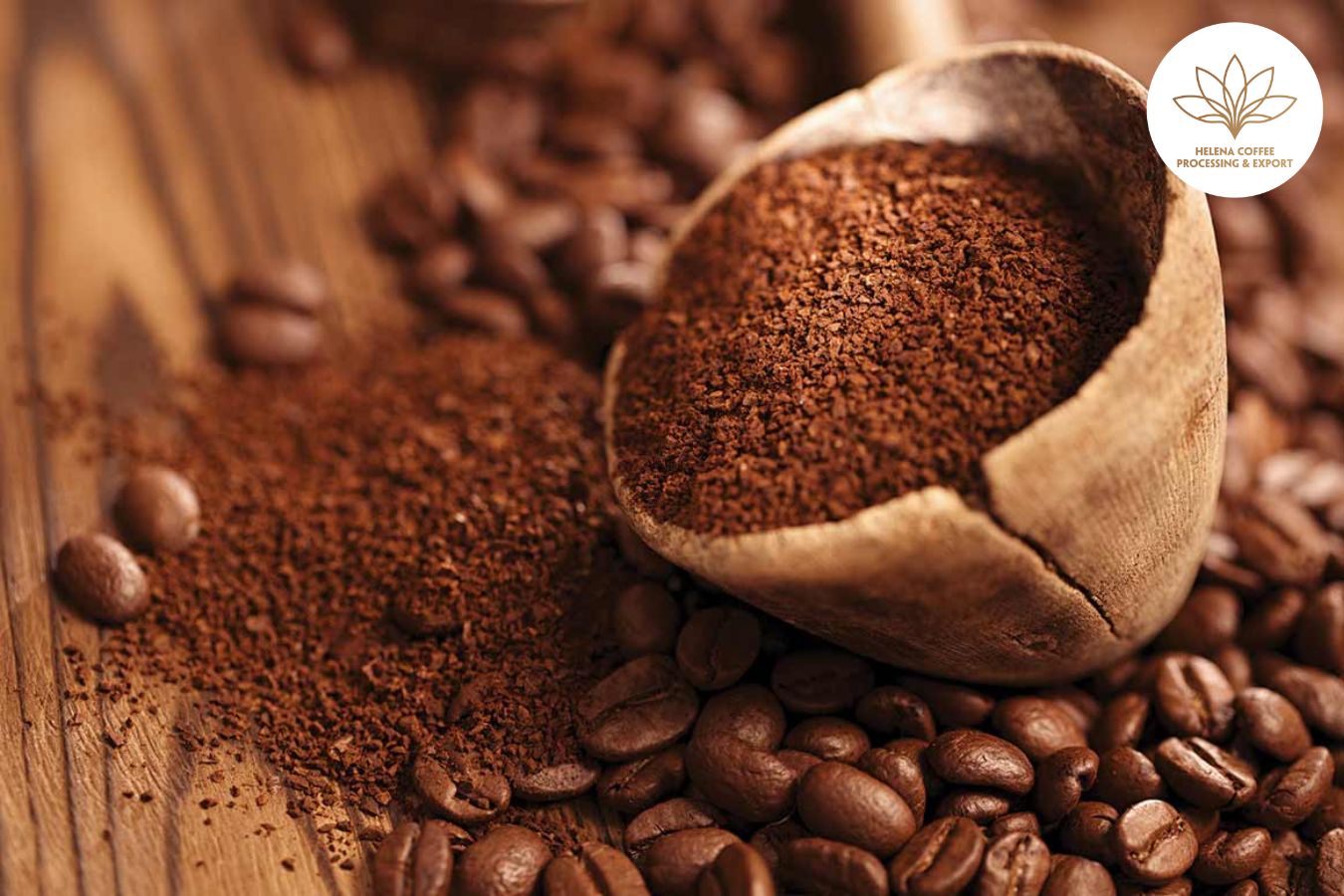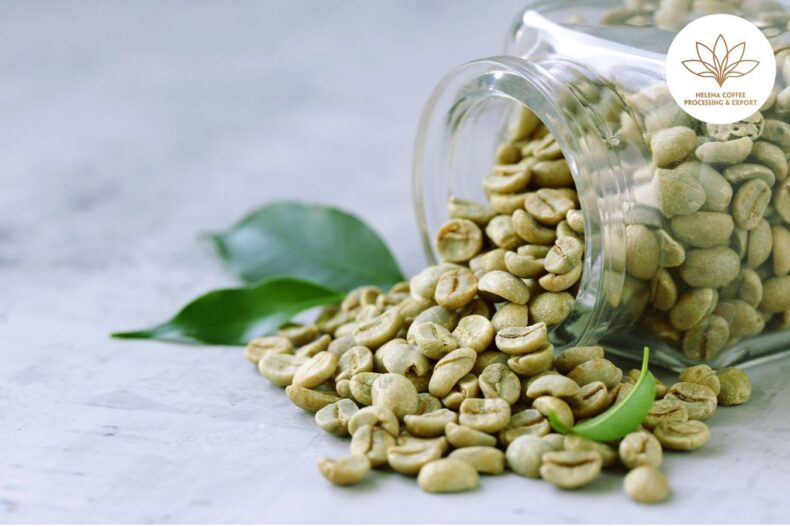
Coffee is a drink made by grinding roasted coffee beans into powder and running hot water over them. The resulting liquid has a rich, aromatic taste and, when served hot, brings out the fullest flavor. Coffee is popular all over the world and more specifically, in each different country, coffee has its own color and flavor.
Recently, more and more coffee shops are popping up everywhere, and consumer demands for coffee are also getting higher and higher. But in reality, whether the coffee you use is clean and raw or not, you need to re-evaluate to ensure your health as well as the most accurate feeling about the taste of coffee. So what is raw coffee? Is the coffee people are using good enough quality? And how to distinguish between raw coffee and impurity coffee? Let’s find out through the following article!
What is raw coffee?
Raw coffee is coffee made from 100% real coffee beans, carefully selected and not mixed with other impurities such as popcorn, roasted soybeans, burnt rice, etc. Coffee beans will be ground. into powder and produce a finished product that is not only delicious in flavor but also has many health benefits.
A cup of raw coffee will bring the full, gentle, sour, and characteristic bitter flavor. A long sip will leave a slightly sweet aftertaste and you will immediately feel the charm of instant coffee on the tip of your tongue.
Benefits of raw coffee
The effects of coffee have been confirmed by experts around the world for a long time. But coffee is only truly beneficial to health when it is clean, raw and not mixed with other impurities.
Raw coffee helps reduce stress, fatigue and instantly increase energy. That’s because coffee contains caffeine – the most commonly consumed psychoactive substance in the world. According to many other studies, coffee improves various aspects of brain function – including memory, mood, vigilance, energy levels, reaction time and general mental function.
A cup of coffee can help your monotonous life regain inspiration and creativity, helping both mind and body become more alert and refreshed. In addition, coffee is also good for the cardiovascular system because it is rich in antioxidants that help clean the blood and prevent high blood pressure. The active ingredient phenol in coffee prevents atherosclerosis and stroke.
More specifically, for women, coffee is also very effective in losing weight. Caffeine in coffee types such as arabica green coffee beans, raw coffee can increase fat burning and enhance the body’s metabolism by about 50%. Coffee also stimulates the nervous system that signals the body to break down fat cells and use them as an energy source as opposed to glycogen.
Process of making raw coffee
Producing raw coffee products that meet quality safety standards must follow the most rigorous process.
Starting from the stage of harvesting and classifying coffee beans. The purpose of classification is to remove black seeds, defects, and moldy seeds that do not meet standards. Choosing good ingredients right from the preparation stage will help ensure the processing process and quality of finished coffee.
After that, the coffee is roasted at a temperature of 200 – 240 degrees Celsius. Coffee roasting time has a great influence on the taste of a cup of coffee, so it is necessary to adjust the time accurately to create flavors. different coffee. This is considered the most important step in the process of making raw coffee.
Coffee after roasting will be cooled as quickly as possible to avoid flavor compounds evaporating due to high temperatures before grinding. The result of grinding coffee is also one of the factors that create the success of a cup of coffee. Coffee beans must be ground evenly, not too large because when brewed it will not bring out all the flavor, but also not too small because it will make the coffee more bitter.
What are coffee impurities?
Today, due to the pursuit of illegal profits and price competition between business units, more and more coffee products mixed with impurities and of insufficient quality appear on the market.
Impure coffee is coffee mixed with other additives such as roasted soybeans to add fattiness, burnt popcorn to create black color for coffee. Even to increase the color and flavor of impure coffee, many production facilities also add chemicals to help create flavor and aroma of coffee, colorants, thickeners and foaming agents in the coffee. soap to make users feel like they are drinking a real cup of coffee.
The popularity of mixing and marinating impurities in coffee has gradually eroded the taste of enjoying coffee properly and lost the user’s perception of a good cup of coffee. Furthermore, using impurity coffee for a long time can cause many health risks for users due to toxic chemicals used in the ingredients.
How to identify raw coffee and impurities
Coffee beans
The first distinguishing feature is the coffee beans. Impure coffee beans, after being roasted, will feel the consistency when touched, as if they were soaked in adhesive additives, often with the aroma of these additives. Meanwhile, raw coffee beans after roasting will not feel greasy and sticky, the aroma will be natural, gentle and faint, not too harsh and pungent like impurity coffee.
Mass
In terms of specific volume, raw coffee powder always has a smaller volume than the grains mixed in impurity coffee. You can distinguish by holding two bags of equal weight coffee. If which bag is larger, feels fuller, and contains more coffee, it can be easily guessed that the bag of coffee is more pure.
Porosity and moisture
Raw coffee powder has uniform smoothness, is drier and more porous. Therefore, when put in water, raw coffee will often float to the top while impurity coffee will sink quickly to the bottom and sometimes even become lumpy and wet.
Color
After going through processing stages such as roasting, grinding, etc., raw coffee powder will have a dark brown color. When mixed, it will have a clear cockroach brown color, not dark and opaque black like impurity coffee. as usual.
People often mistakenly expect that a good cup of coffee when brewed must be dark and thick black instead of the gentle cockroach brown color of a raw cup of coffee. That is a completely wrong concept and can even be harmful to health because the finished cup of coffee is black due to the mixture of impurities and other additives that are not completely safe for humans use.
Taste
This can be the most difficult characteristic to distinguish if you are not someone who knows much about coffee. Many people often confuse the scent of raw coffee with coffee laced with chemical flavorings in grains such as beans, corn, and roasted rice. The true aroma of coffee is not strong or strong, but gentle and deep like a gentle breeze blowing into the taste buds of the person enjoying it. When drinking, it will have a mild, sour and natural taste with a lingering aftertaste from raw coffee beans.
When drinking impurity coffee, it will have a stronger and more intense flavor of aromas. When ice is added to the coffee, the coffee still retains its solid black color but the flavor becomes bland and does not leave any special aftertaste. Hopefully the above article will help you gain more knowledge about raw coffee and how to distinguish raw coffee from other types of mixed coffee.
FAQS:
